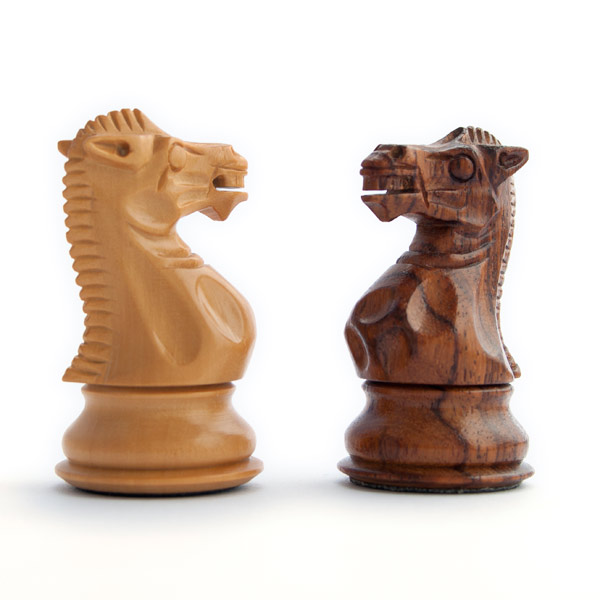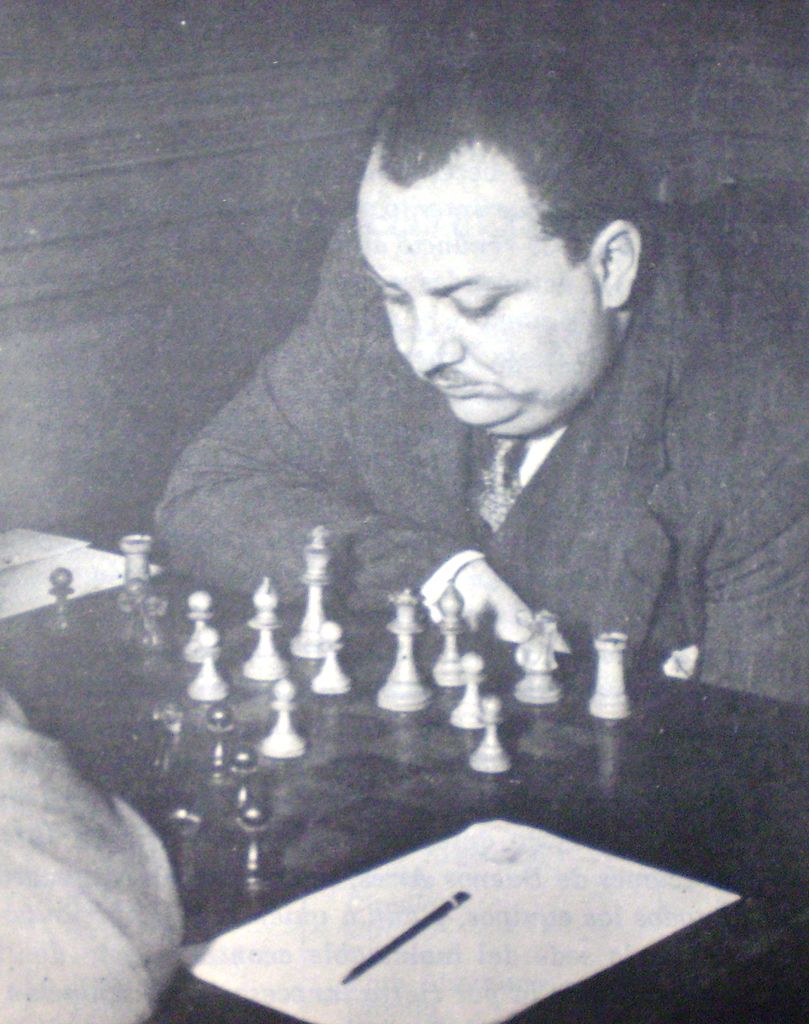
Chess board visualization training is necessary in order to not miss tactics, to be able to see more combinations and to improve your chess level. Chess board visualization does not come naturally to all chess players and is something that needs to be worked on. Chess visualization is something that must be trained, and should be part of a regular chess training regimen. This type of training is one of the most neglected areas in chess improvement training, and it is the one that can increase your chess rating the most.
Chess board visualization training will improve your ability to calculate long variations and will make you a more confident and better chess player. Visualization training should take place 3-4 times per week in 5-10 minute sessions.
Board Visualization Exercise #1
Arrange the pieces on a board and look at the normal developing move for all the pieces. The White knights develop to c3 and f3, while the Black knights develop to c6 and f6. The light squared bishop develops to e2,d3,c4,b5, etc. Once you have studied the knights, bishops (regular and fianchetto positions) the castled King and rook and the four central squares (e4,d4,e5,d5) you remove all of the pieces and point and name out loud all of the normal developing squares for the pieces.
After repeating exercise 1 for the first 2-3 sessions you can then move on to exercise 2.
Board Visualization Exercise #2
Same concept as in exercise #1 but this time you do not look at the board.
– note where the four knights normally develop
– note where the four bishops normally develop
– note the four squares for the fianchettoed bishops
– note the squares where the King and rook are placed after castling
Board Visualization Exercise #3
After mastering exercise 1 and exercise 2 you are ready to move on to the third chess board visualization exercise.
Using the board look at all of the squares controlled by:
– a knight on c3
– a knight on f3
– a knight on c6
– a knight on f6
Then, without the use of the board repeat the exercise again visualizing the squares controlled by the knight on f3, c6 and f6.
Perform this exercise for two sessions or until you feel comfortable. You should also repeat exercise #2 until you are extremely comfortable performing it.
Remember it is important to build upon fundamentals, and exercise # 2 is an important building block in developing chess visualization skills.
Chess Board Visualization Exercise #4
Previous Exercises:
– Exercise 1
– Exercise 2
– Exercise 3
For exercise 4, using the board look at all of the squares controlled by:
– the f1-bishop developed to e2 (place only this bishop on the board)
– the f1-bishop developed to d3, c4, b5
– the f8-bishop developed on e7, d6, c5, b4
– all remaining bishops as above
Then, without the use of the board repeat the exercise again visualizing the squares controlled by the bishops above.
Perform this exercise for 2 sessions or until you feel comfortable.
Chess Board Visualization Exercise #5
For exercises 1-4 visit the chess exercises page.
It is very important that you have mastered exercises 1-4 before starting on this exercise.
Without looking at the board, tell all the squares controlled by:
– a bishop on g2
– a bishop on g7
– a bishop on e5
– a bishop on b7
– a bishop on d2
– a bishop on c5
Chess Board Visualization Exercise #6
It is very important that you have mastered exercises 1-5 before starting on this exercise. For exercises 1-5 visit the chess exercises page.
Without looking at the board, tell all the squares controlled by:
– a bishop on b2
– a bishop on b7
– a bishop on a5
– a bishop on h4
– a bishop on d4
– a bishop on c4
Chess Board Visualization Exercise #7
It is very important that you have mastered exercises 1-6 before starting on this exercise. For exercises 1-6 visit the chess exercises page.
Without looking at the board, tell all the squares controlled by:
– a knight on c3
– a knight on e2
– a knight on f6
– a knight on d4
Chess Board Visualization Exercise #8
It is very important that you have mastered exercises 1-7 before starting on this exercise. For exercises 1-7 visit the chess exercises page.
Without looking at the board, tell all the squares controlled by:
– a knight on c6
– a knight on f3
– a knight on b2
– a knight on c5
– a knight on h7
[feather_share]






